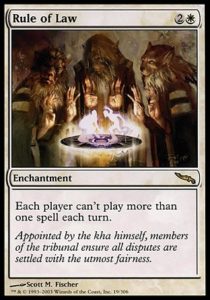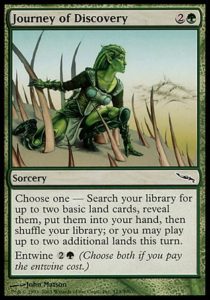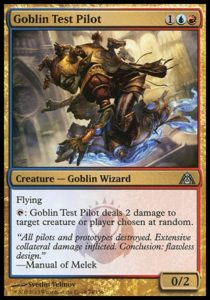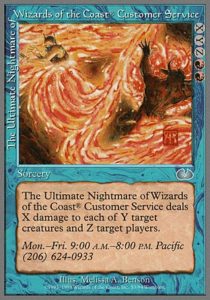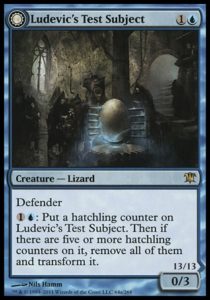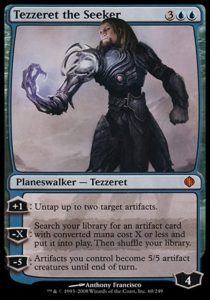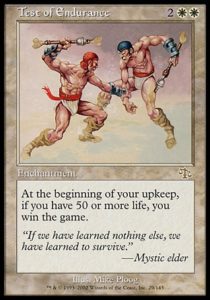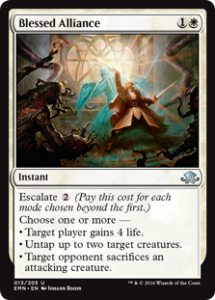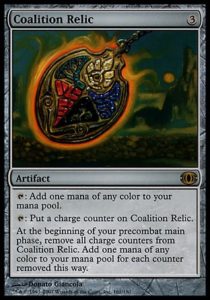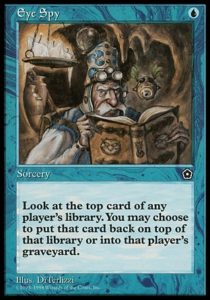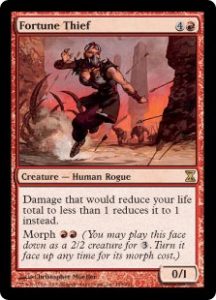Yesterday, we discussed the likely qualities of successful cubes for Wizard’s You Make the Cube contest. Today, I’d like to make more direct suggestions of what I expect winning submissions will look like.
I’d like to make sure it’s clear that while I am both a proud cube creator and a game designer, I’m not a WotC employee and can only speculate as to what successful entries will look like. That said, I hope to help folks tweak their cubes to serve the interests of the community, as well as present my own thoughts to the community so that they might be improved.
The Rules
Before submitting your cube, you should do the easy thing and read the contest’s rules, both to confirm your eligibility and whether your submission is what Wizards is looking for. I’ve copied the relevant criteria as a reminder:
Submissions will be judged on the following criteria:
Creativity—We’re looking for a cube that’s different than our existing offerings (Vintage, Legacy, and Legendary Cube). The cards can overlap as much or as little as you like with our other cubes, but we’re looking for a novel play experience.
Fun—We’re looking for a cube that Magic Online players of all skill levels be able to have fun playing. If you need to know how to resolve a Doomsday combo in order to play black in the cube you’re submitting, maybe think of other ways that the archetype could go.
Feasibility—We’re looking for a cube that we can add to Magic Online in time for the November release. If your submission requires that packs for the draft consist of only a single color, that might take technical work that we can’t do in time for the November cube.
Replayability—Magic Online players draft a lot. If your cube design has a play experience that would be less exciting after being played only a few times, I would try to find a way to modify it so even someone who has already played it many times is still interested.
We discussed several of these with ARCO yesterday, but the two we haven’t discussed at length are Fun and Feasibility. First, submissions need to be fun for players of various levels of experience and play skill; a cube cannot be too difficult to understand or play that it eliminates large swaths of potential players (in other words, it needs to have high Clarity).
The cube also cannot require too much of Magic Online’s team. All current cubes function essentially the same way:
- They contain a fixed number of cards (for this contest, the cube must contain exactly 540 cards).
- In a draft, 360 cards are randomly selected into booster packs.
- Cubes contain no rarity; there is no common/uncommon/rare/foil slot.
This structure allows for a large amount of flexibility, but does not accommodate all kinds of cube. Any cubes that require additional rules to be built into Magic Online have no guarantee that the MTGO team has the time to implement them.
All that said, here is every tip I can think of to help you create as successful a cube for this contest as possible.
Make something that you love.
This may seem obvious, but many people are likely to crank out a design for the sake of doing so, rather than because they’re excited about what they’re making. If you’re going to excite other people about your design, it has to be something that you yourself are excited about. If you’re not eager to draft your cube, then why should anyone else be?
Playtest your Cube.
No amount of thinking substitutes for actually trying out your design. In being a cube designer, you’re a game designer, so act like a game designer and try out your creation. Many strengths, weaknesses, and needs will only become apparent through trial and error, and I promise you, awareness of them is absolutely critical to crafting the best possible Limited experience.
You have License to Try Something Crazy.
Wizards wants their new cube to be different from Vintage, Legacy, and Legendary Cube. While it’s a safe design idea, a Modern Cube is unlikely to cut the mustard unless it’s radically different from Legacy Cube. You’re more likely to create something interesting if you start from someplace wild and then scale it back, then if you start at one of Magic’s current cubes and tweak it until it’s sufficiently different. That said, you’re aiming to be different, not crazy, so if you do go this route, make sure to scale it back to fit ACRO and the contest’s rulkes.
Playtest your cube multiple times.
Make sure that your cube is fun the third time you draft it. It doesn’t need to be able to stand the test of time, but you should make sure that it can withstand being drafted three times. If the same deck wins all three times, or the same eight draft decks appear functionally identical all three drafts, then your cube has insufficient replayability and balance problems.
As you make changes to your cube, make sure to playtest those, too! If you draft your cube three times, make some large tweaks, and then submit it, you haven’t done due diligence.
Know your platform’s affordances.
Magic Online is a powerful system, but there are limits to what can be done, particularly since the online team is likely not going to be adding cards or functionality to Magic Online to accommodate your design. You can break the singleton rule (no one says a cube needs to be a singleton format), have an uneven color distribution (which I believe Vintage cube has already done), or have highly unusual color archetypes. However, you almost certainly can’t have conspiracies or vanguard cards, add text to cards, require multiplayer games, or employ rarity.
Playtest!
There is honestly no substitute for playtesting, and if your cube isn’t fun enough to be excited to play in person, it isn’t fun enough for Magic Online. If the first people to play your cube are the judges, you’re doing it wrong.
I know it may sound excessive, but the easiest way to improve your design is playing it. Besides, you’re probably reading this because you like playing Magic, why deny yourself an excuse to play Magic? Similarly, the easiest way to fail as a designer is to assume that your product is perfect without bothering to see if it works.
Remember to give players Options.
We said it yesterday when discussing Options, but it bears repeating: flexible cards are worth their weight in gold. While you want to have recognizable and distinct archetypes, you also need versatile cards for players to fight over and to make archetypes play differently across successive drafts.
Lorwyn is one of the most on-rails Limited environments. (On-rails means that once you know what archetype/tribe you’re drafting, you have very few decisions to make in a draft—you just draft the best card that is part of your tribe.) However, Lorwyn supports its strong tribal themes with flexible cards such as changelings (which function across all archetypes), multi-tribe cards like Silvergill Douser (which was at its best in Merfolk, but was nevertheless a house in Faeries, as well) and Kithkin Greatheart (which works in both kithkin and giant decks), and generally strong spells like Lash Out (which every red deck was happy to play).
Make sure to maintain a healthy balance of flexible cards—enough so that drafts aren’t on-rails, but not so many that drafts devolve into all multicolor “goodstuff” decks.
Carefully manage fixing and colorless ramp.
It’s very easy to throw a lot of dual lands and signets into a cube, but such cards come with a heavy price. They weaken aggro decks (mana rocks allow slower decks to jump ahead to the midgame, when they have powerful stabilizing effects), they weaken green (if decks can easily fix and ramp without green, green loses much of its strength), and they empower five-color goodstuff (a very fun deck, but a degenerate one if it’s too easy to draft). Similarly, if you include too little fixing, you risk making multicolor cards unplayable (not a bad thing necessarily, but they shouldn’t be included if they’re basically traps) and big mana strategies unviable. There’s a careful balance to be maintained.
You know what helps you find this balance?
You guessed it: Playtest!
Playtesting is more than just drafting your cube; you’re a designer, so playtest with purpose. Record the results of each draft. See what archetypes are represented each draft. Record which decks over- and underperform. Track which decks go 3-0 and which go 0-3. Ask yourself and your players: what is too powerful? How much fun are they having? What cards feel out of place? Do they want to play again?
You’re not just playtesting to have fun (though that’s still a goal, particularly for your playtesters), you’re playtesting to make sure your design is as great as it can be.
Wrapping Up
And that’s all the advice I have for you, proud cube designers and afficionados. I wish you all the best luck (and playtesting) as we compete to create the next great Magic Online cube.
If you’re excited to compete but don’t know where to start, here are a couple directions I’d suggest:
- Blocks cube. Combine both Zendikar, Mirrodin, or Innistrad blocks into an experience that exalts some of Magic’s favorite worlds and recontextualizes many Limited cards. If you feel that there are holes, don’t be afraid to include cards from outside these blocks (particularly from sets like Magic Origins, which contain Zendikar and Innistrad, as well as the Mirrodin-friendly Kaladesh). You can also combine different worlds, such as Invasion, Ravnica, and Alara, or create your own spin on Magic Origins. Additionally, you don’t have to combine multiple blocks; Shadowmoor was a fascinating Limited environment and a Shadowmoor set cube could be a lot of fun.
- Tribal Cube. While Tribal cube runs the risk of being on-rails more than many other themes, tribal decks remain extremely popular. See if you can learn the lessons from (and likely take many cards from) Lorwyn and Onslaught to craft a fun experience where the majority of players, but not necessarily all players, will dedicate their decks to a single or pair of creature types.
- Pauper/Peasant Cube. There are some excellent cubes out there which ecshew rares and mythic rares (and sometimes uncommons, too). Such cubes would immediately stand out on Magic Online and entice loves of Pauper. Such cubes can often fall victim to (but are not doomed to) board stalls, so playtest to make sure most games aren’t prolonged slogs.
I can’t wait to see the community submissions and am eagerly working on my own. Here’s hoping that this contest both spawns a cube we’ll love playing for years to come, as well as creates another strong bridge between Magic and its communities.
And, as always, thanks for reading.
—Zachary Barash
Zachary Barash is a New York City-based game designer. He’s played Magic since 1994, he loves Limited and drafts every available format (including several that aren’t entirely meant to be drafted). He loves Ulvenwald Mysteries, as it’s both a strong Limited card and tells a fantastic story entirely through its mechanics.

